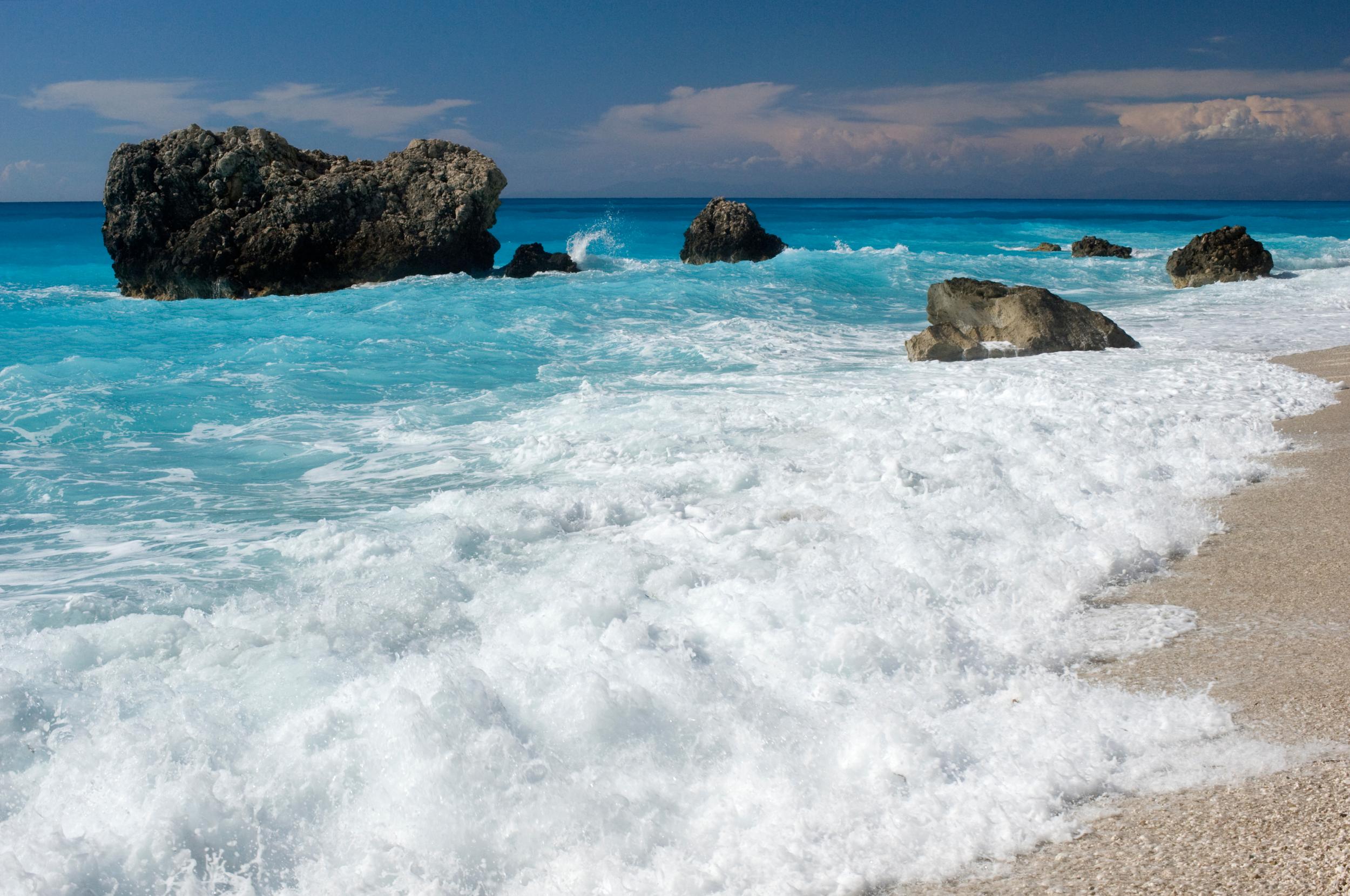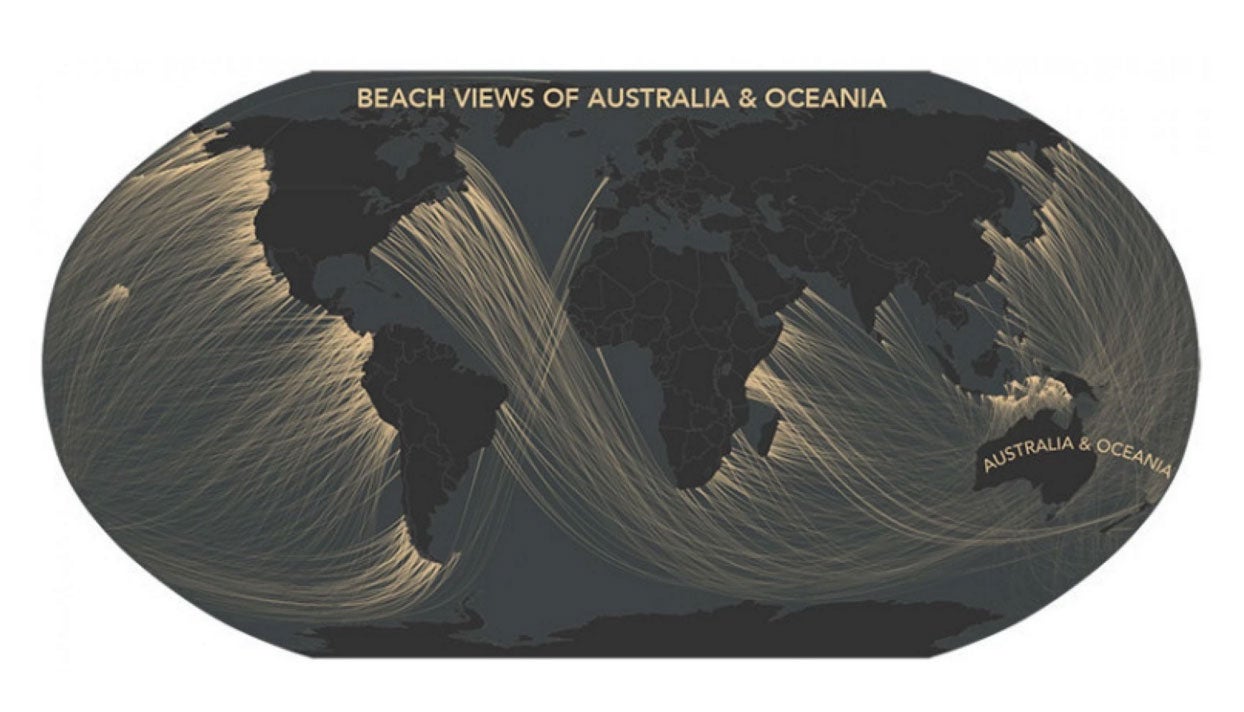What’s straight across the ocean when you’re at the beach

If you jumped in the ocean at Atlantic City, New Jersey, and started swimming in a straight line, where in the world do you think you would end up?
The answer, surprisingly, is South America, according to a new map project by cartographer Andy Woodruff. If you start swimming now, you just might end up in Rio in time for the summer Olympics.
Woodruff has created a beautiful series of maps that shows what is across the ocean from you when you're standing on beaches around the world. His maps are actually inspired by an article and series of maps by me, Laris Karklis and Weiyi Cai, which in turn were based on earlier maps made by Eric Odenheimer.

These earlier maps, like the one above, showed what is due east or west of you when you are standing on any given beach around the world. As those maps indicate, what's directly east of Atlantic City is actually Portugal.
But as Woodruff points out, when you're standing on a beach, you're rarely facing directly east or west. Most of the time you're facing perpendicular to the shore and staring out at the water. Since coastlines around the world twist and turn in extreme directions, you could be facing any direction, not just east or west.
So Woodruff created the beautiful series of maps below, which highlight the beaches around the world that face a particular continent. He used medium scale Natural Earth data to calculate the angle of the coast at regular intervals, then drew a line directly out to sea to see where it would end up.

In this image, lines are drawn from the beaches where you would hit Australia or Oceania if you went straight ahead and didn't turn.
Here is what Woodruff's maps look like for other continents:

If you're wondering why the lines on these maps look like they do, the short answer is that the earth is round. Woodruff's lines follow a great circle arc, which look curved on flat maps but are the shortest and straightest lines between two points on a sphere. This is why, if you've ever traveled long distances on an airplane, you might have noticed that it looks like the plane is making an arc on the map -- it's a two-dimensional representation of the shortest path in a three-dimensional space.
You can read more about this and Woodruff's maps here.
Copyright: Washington Post
Join our commenting forum
Join thought-provoking conversations, follow other Independent readers and see their replies
0Comments